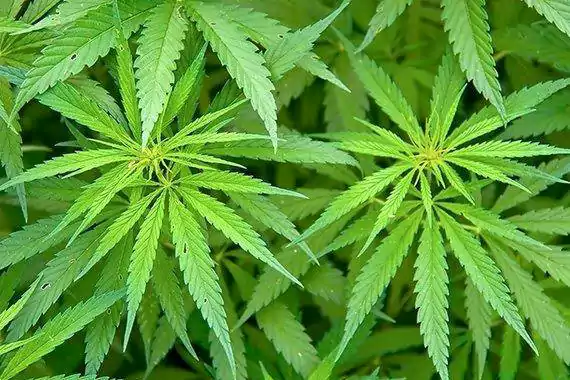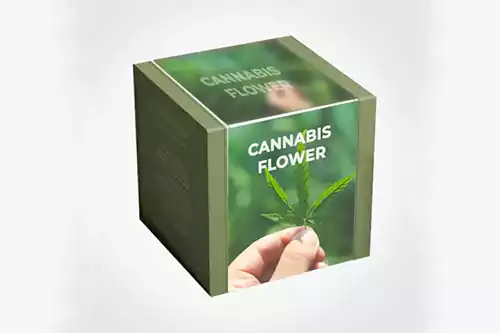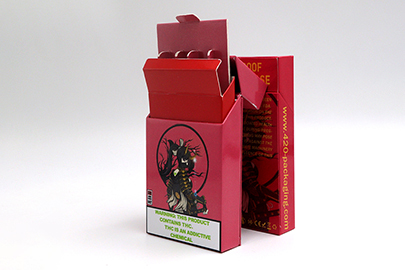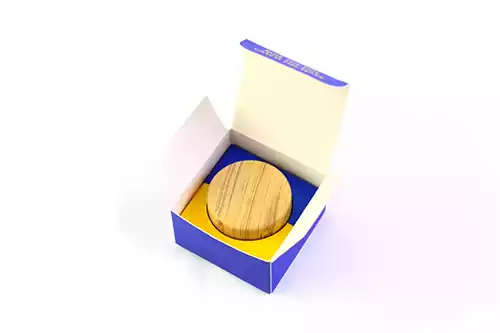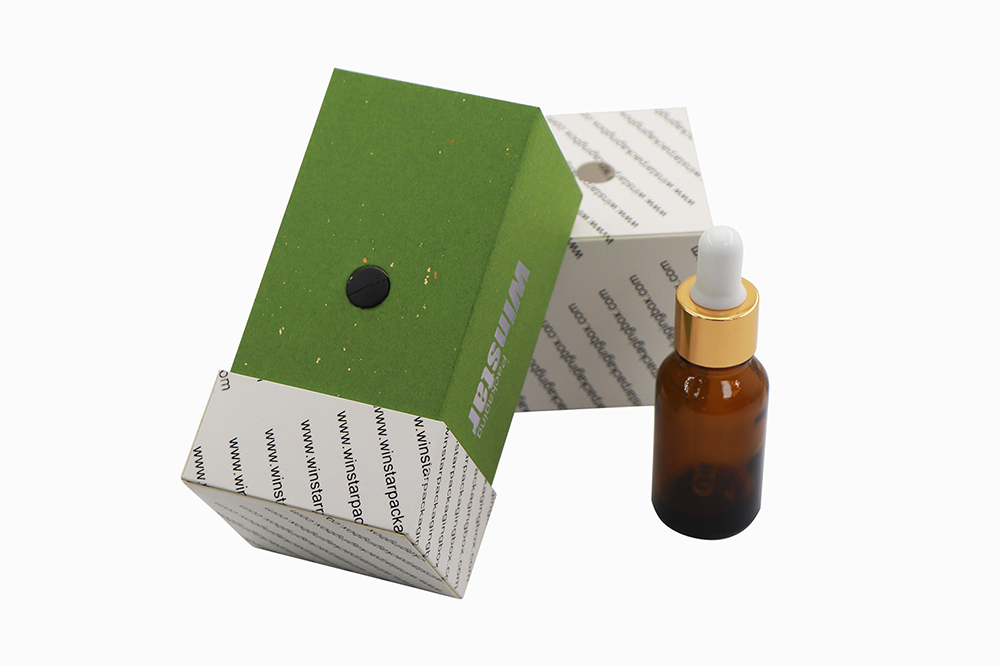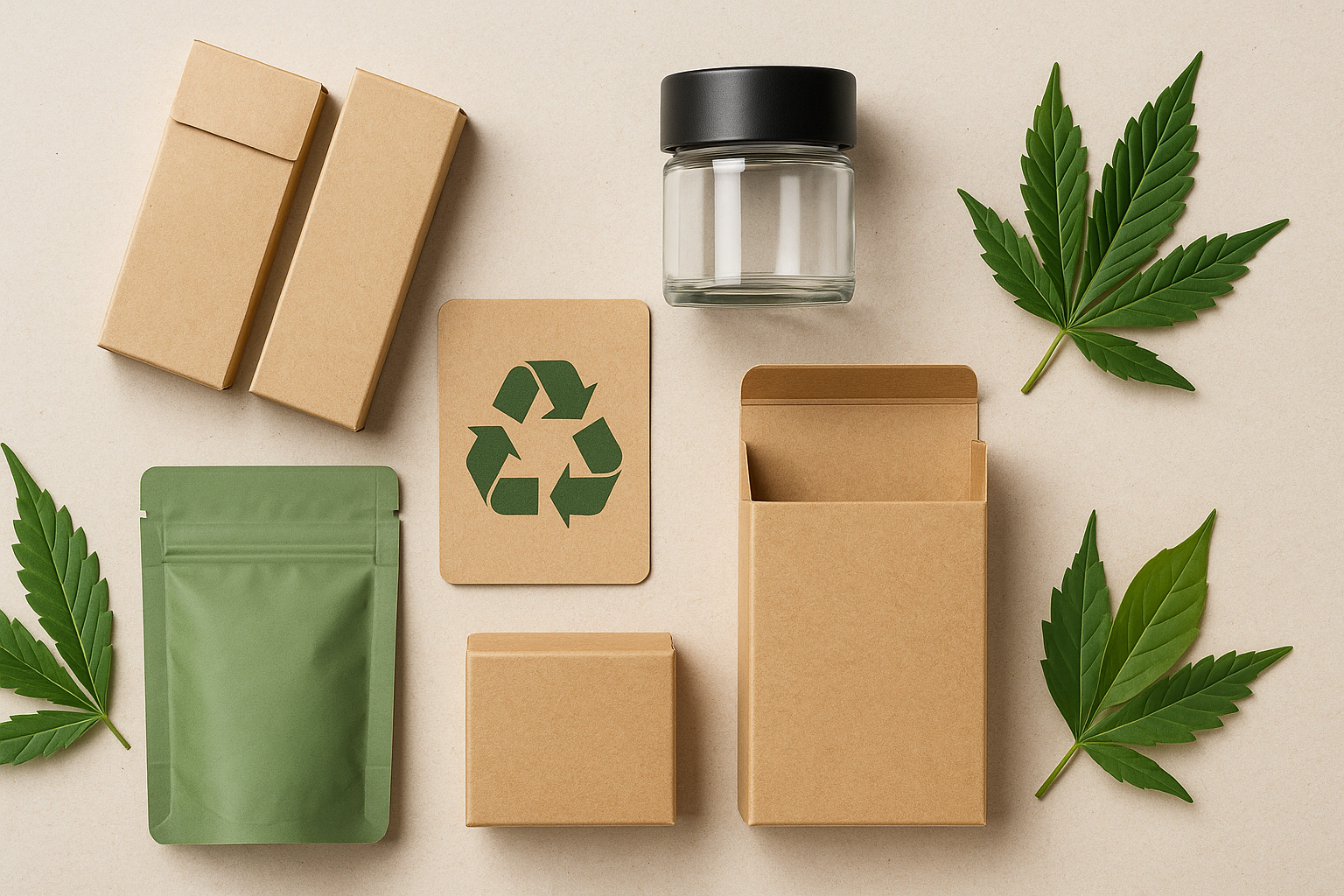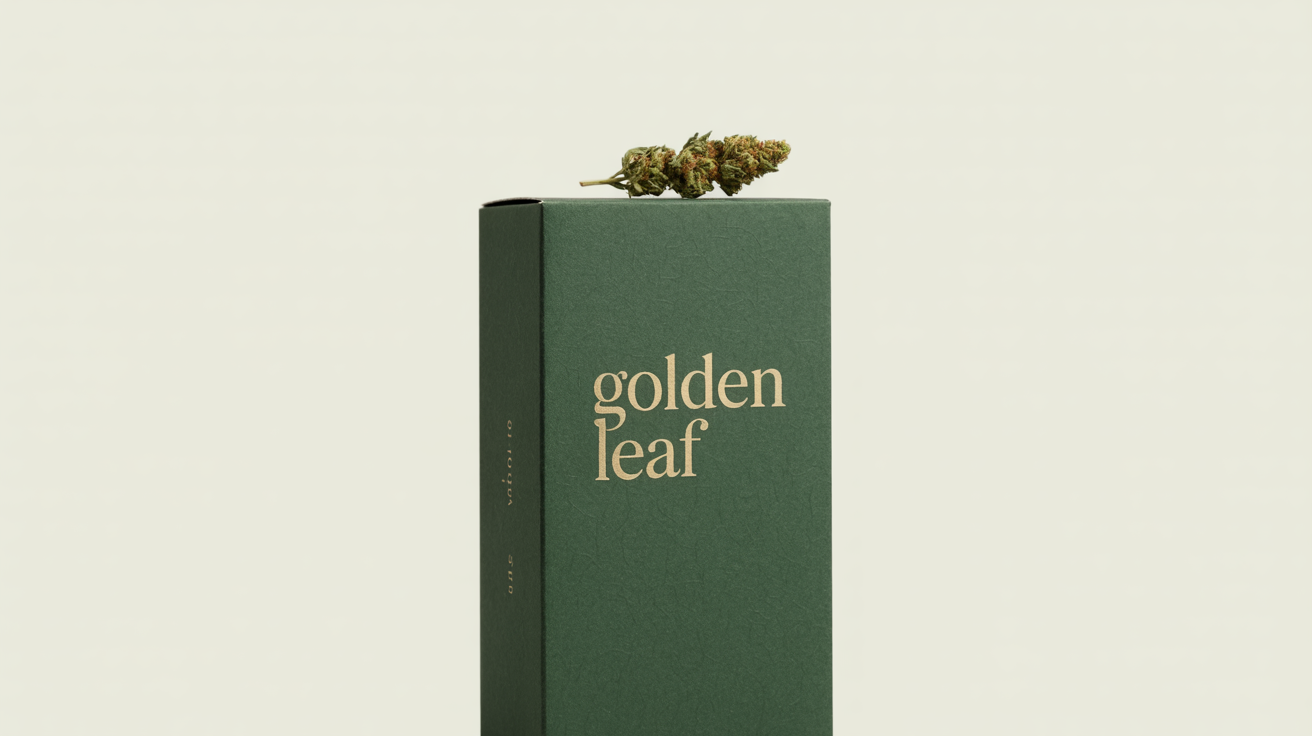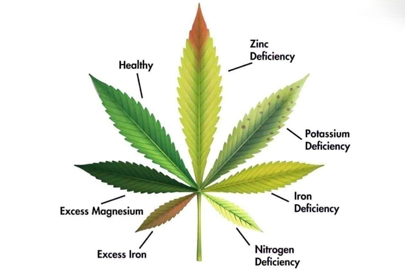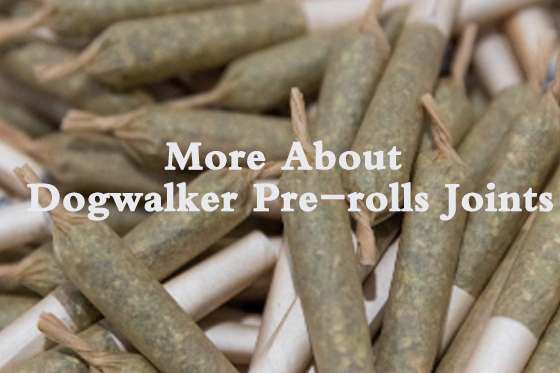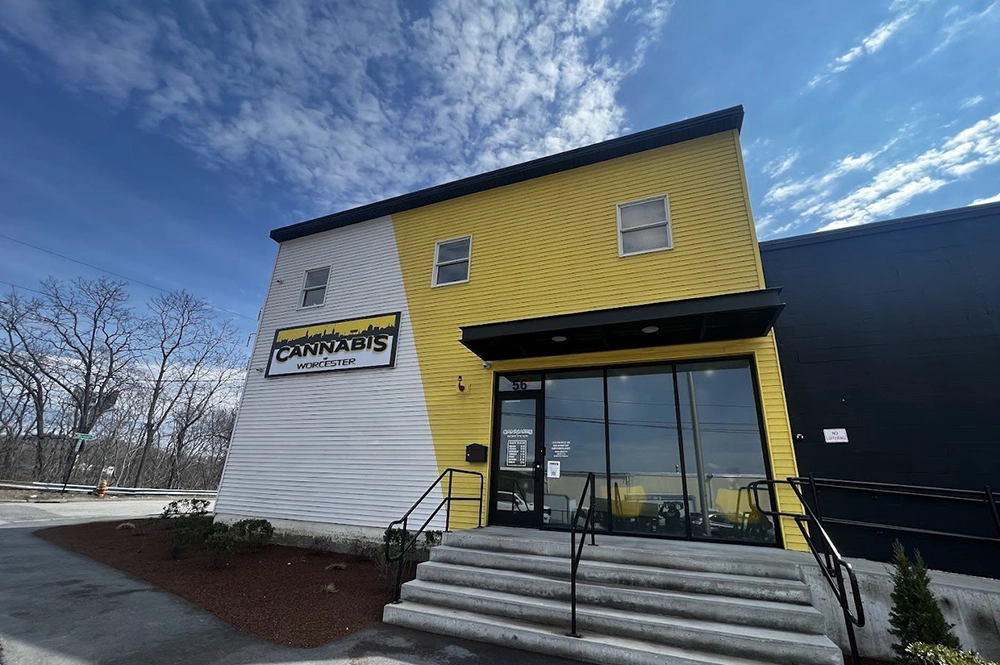Cannabis birthplace
Cannabis is a native plant that is abundant throughout the world, native to the temperate regions of Asia and Europe. From the assumption that there is a wide distribution in the central part of the continent. from the Caspian Sea to the southern Himalayas and western Siberia. It is a plant that has been recorded in many ancient documents that it was cultivated for use as a fibrous plant and used as an addictive plant since ancient times. In China, fibers have been used for weaving since 5000-4000 BC. later in the first century Therefore, the utilization of fibers has been developed to make paper. in European countries The use of the cannabis plant dates back to 700 B.C.E. Mostly used as a rope for hunting. During the 14th to 15th centuries in Italy, hemp plants were heavily cultivated for the fibers to make rope for use in marine ships due to their toughness and durability.Distributed to both North America and South America as well.
As for Thailand, there is an ancient history of marijuana use in the early Rattanakosin period, with murals from Wat Phra Kaew inscribed for Thailand growing along the hillsides in the north. Although marijuana has been used as a medicinal drug for more than 3,000 years, cannabis is considered a drug. make it a forbidden plant In Thailand, it is illegal to grow and use cannabis .
In the past, various hill tribes In northern Thailand, fibers from the stems of male cannabis plants are used by fibers from newly flowering stems. Age between 3-4 months due to the toughness of the fibers Light and white, suitable for use as a textile fiber as well.
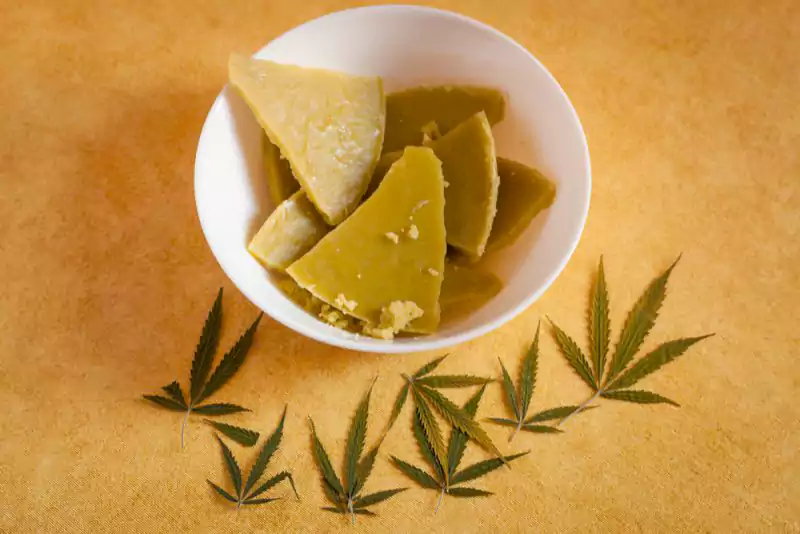
Benefits and properties of cannabis
Hemp is a type of hemp and hemp plant. which has very sticky fibers In the past, it has been used to make various uses for making ropes, such as ropes for walking, weaving, tools and utensils, including being mixed with food to help stimulate appetite.
In addition, there are currently research studies that 80 percent of hemp fiber is cellulose, which is readily biodegradable. no harm The stems can be used to make synthetic paper better than the paper made of perennials, and therefore can be used to make paper instead of trees because cannabis is a plant that has a life cycle of only 120 days, can be planted 10 tons per acre (1 acre) of land. = 2 rai) within 4 months, planted 4 times faster than cotton, 3 times heavier than cotton. The United States found that cannabis can be grown and used to make paper 4 times as much as perennials. In addition to making paper from cannabis plants It doesn't require chlorine like wood does. which produces dioxins In addition, the fibers of the cannabis plant are much better used to make paper than wood.
As for the medicinal properties The properties of traditional medicine indicate that Female inflorescence nourishes the nerves, relieves nerve pain, makes the seeds doze off, increases appetite, makes menstruation normally, but if eaten too much, it may cause fear of unconsciousness in the whole plant, nourish the nerves, have appetite, make menstruation normally
in the textbook of medical care There are 11 recipes of Thai medicinal plants that contain cannabis from different scriptures, for example the Genesis Bible. Biblical Properties (Lam Maha Coordinates)
in the textbook of Phra Narai's medicine There are 3 formulas of Thai cannabis-infused drugs, 2 of which are cannabis-infused formulas with cannabis as the main ingredient, namely Ya Thiphakat, which has 16 parts of cannabis leaves, and Souk. reclining There are 12 main parts of cannabis leaf.
As for modern medicine, there have been several research studies indicating that the results of preclinical studies It was found that cannabinoids have many pharmacological effects. The main effect is anti-cancer. anti vomiting Stimulates appetite, relieves pain, eliminates anxiety and induces sleep. Clinical studies involving cannabis and cannabinoids have reported that THC is effective against a brain cancer called glioblastoma. Giving CBD can reduce the recurrence of this cancer, including
Parkinson's disease. From the research, it was found that Cannabis extract known as Cannabidiol (CBD) or the drug Nabilone helps patients have less pain Decrease in symptoms and move better
Epilepsy The use of extracts from cannabis oil (Cannabis Extracts) or the use of a cannabis extract called Cannabidiol (CBD) helps patients. There was a more than 50 percent reduction in seizures and a decrease in the level of stress. The research also found that The patient had a better memory. Concentrate and focus on things better. The brain is more developed. able to communicate better with others and for a long time to fall asleep more easily The research also found that Using hemp oil extract There were no other side effects with epilepsy patients.
Cancer Research studies have shown that Patients with cancer and side effects from chemotherapy extracts from cannabis can help patients have a better quality of life Reduce pain and increase appetite and increase the weight of the patient and make it easier for the patient to sleep Although at this time there are no controlled trials in humans. But animal research has shown that Cannabis extract has the ability to inhibit and destroy cancer cells. There are also open research studies. that asked from a group of patients with cancer And there have been research findings that cannabis extracts are very effective in certain groups of patients.
Alzheimer's disease Research has shown that either cannabis oil extracts or nabilone can reduce symptoms such as delusions, indifference, inattention. However, the patient was still able to eat better. Groth is less easily irritated. Make caregivers have better mental health.
pain relief From the research, it was found that concentration level tetrahydrocannabinol (THC) has a significant effect. with pain relief There will be no pain from injury. of the spine or pain as a side effect of other diseases such as cancer, Parkinson's disease and multiple sclerosis. In a study in which the comparison group received a double-blind placebo-controlled drug, those who received the cannabis extract experienced a significant reduction in pain.
multiple sclerosis From the research, it was found that Patients with multiple sclerosis When given with cannabis extract or the drug Sativex® can help reduce nerve pain. muscle spasms muscle contraction and ataxia or staggered symptoms
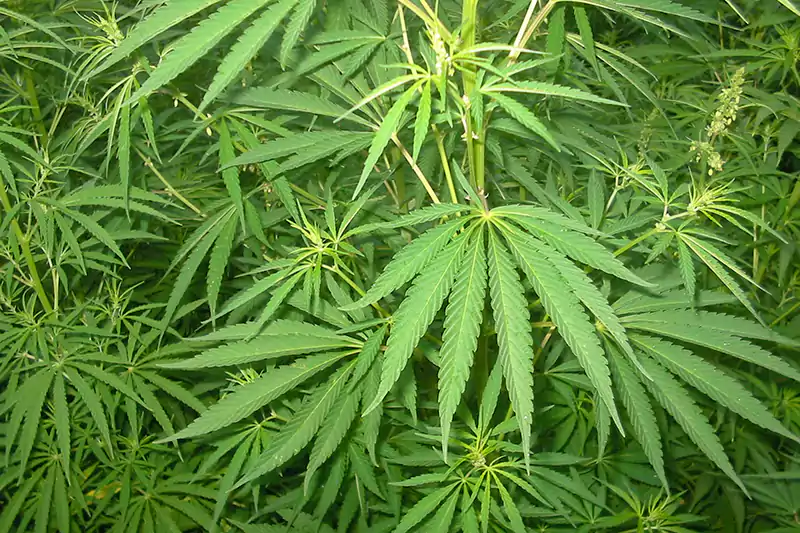
Forms and sizes of cannabis use
Because in Thailand , cannabis is still a legal plant and drug. Therefore, it is a forbidden plant to grow and use. but abroad (where marijuana is legal) There are various forms of marijuana related products , such as the oral spray form. Each inhalation contains approximately 1:1 ratio of THC:CBD used to reduce neuropathic pain in patients with multiple sclerosis, cancer patients in capsule form. Each capsule contains 2.5, 5 and 10 mg of dronabinol, which is synthetic delta-9 THC is used to reduce nausea and vomiting in cancer patients. inducing appetite in AIDS patients and reduce neuropathic pain in patients with multiple sclerosis. Capsule form. Each capsule contains Nabilone 1 mg, a synthetic compound close to THC. It is used to reduce nausea and vomiting in cancer patients.
Cannabis general characteristics
Characteristics of the plant. Marijuana is a biennial plant that lasts only one year. There are important characteristics as follows.
Root part: Tap root system with many branches.
Part of the trunk: found that the trunk is erect, green, about 1-3 meters tall, looks succulent when it is a seedling. The wood begins to form at 2-3 weeks of growth. Plant growth is slow for the first 6 weeks, after which it gains height rapidly. until having a fixed average height of about 200 cm due to flowering The bark of the stem can be peeled off to take advantage of the fibers, with the primary bast fibers producing long, tough but rather coarse fibers. The inner bark attached to the wood (secondary bast fibers) produces finer but shorter fibers.
Tribute of leaves: a single leaf, palm-shaped, arranged oppositely The leaves are divided into lobes, about 5-8 lobes, each lobe is oval. end and base The margins of all leaves are serrated with a saw tooth. They are approximately 0.3-1.5 cm wide and 6-10 cm long. The overall appearance of the leaves is similar to castor leaves, opium leaves and cassava leaves. The upper surface of the leaves is dark green. The underside of the leaves are slightly light gray. There are glandular hairs spread over the upper leaf surface. The lower part has downy hairs along the leaf plate. Petioles are about 4-15 cm long. In one stem, there are 3-11 single leaves with a greenish smell.
Flower part: There are 2 types, namely, the type with male and female flowers on the same plant (monoecious) and male and female flowers separated from each other (dioecious). In Thailand, cannabis plants have male flowers. and the female flowers are on different plants Inflorescences in the axillary and apex of the cannabis plant usually develop flowers and seeds in 90-120 days. Male flowers: male panicle inflorescences consist of 5 sepals, independently colored. Yellowish green, found 5 stamens, blooming period about 2 months, female flowers: axillary and apex. In the inflorescences are compacted together. The inflorescence is spike, consisting of dark green sepals wrapped around the ovary. Inside, there are 2 stigma, reddish-brown. The lifespan of the flowers is relatively short, about 3-4 weeks to fruition.
Part of the seed: It is a single seed. Smooth oval shape with brown trim. When dry, it is gray, about 3-4 mm in size, with an average weight of 8-24 g per 1000 seeds. The seeds are released about 2 - 3 weeks after flowering.
Hemp and cannabis are different plants . But it originated from the same plant. Marijuana plant (Marijuana) is scientifically named Cannabis sativa L. Subsp. indica (Lam.) E. Small & Cronquist. sativa L. Subsp. sativa, the external characteristics of these two plants. There will be little differences that are difficult to distinguish, but can be distinguished in the following tables.
Cannabis propagation
As Thai law states that cannabis is a plant and a drug, it is a prohibited plant to grow and use in Thailand. But there are permission to plant for use in research studies from many institutions to research the essence that will be used in medicine with 2 types of planting:
1. Planting in greenhouses
Advantages: High quality and consistent yields, planning to harvest crops all year round It can control environment and pests. This makes the research clearer because they can control productivity and control technology.
Disadvantages: The initial cost is high. and high technology The cost of operation is higher than outdoor cultivation. Artificial sunlight must be created and the system is complicated.
2. Planting outside the greenhouse
Pros: The initial cost is less than growing in a greenhouse. Low operating costs, cannabis plants can make full use of natural light.
Disadvantages: The quality of the produce cannot be controlled. There may be problems with pests. Harvest only once a year
Line development guidelines Cannabis varieties in Thailand are grown under GMP to study the quantity and quality of important medicinal substances. The requirements of GMP cultivation are as follows:
1. Must prevent fungal infection. by humidity control Controlling planting methods to avoid fungal growth.
2. Must not contain pesticides
3. There must be no residual chemicals or fertilizers.
4. There must be no foreign matter such as pollen, insects, insect eggs, wool or soil dust.
5. Must have consistent quality and quantity of output.
6. Species grown for medicinal purposes must be controlled with a clear direction.
Chemical composition
In marijuana , there are 400-500 types of chemicals. The female inflorescence has a resin (Resin), which consists of the main substance. phytocannabinoids which need to go through a heat extraction process Around 122-140 o C, the two main active cannabinoids are delta-9-tetrahydrocannabinol (THC) and cannabidiol (CBD).The receptors for this group of compounds in the body are called cannabinoid receptors (CB), which are divided into CB1 and CB2. Other and found mainly in white blood cells and related to the immune system, these two substances are valuable. Similarly, THC when given orally is valuable. Bioavailability is approximately 4-20% and when given by inhalation or by smoking is of great value. Bioavailability is about 10-69%, so the Bioavailability value of cannabis depends on the form of medicinal products such as vaporization, smoking, capsules, transdermal, tincture and oro-mucosal spray. It also contains Terpenes and Flavonoids, including Cannabichromene Tetrahydrocannabiviarin Cannabinol Cannabigerol.
cannabis chemical composition picture
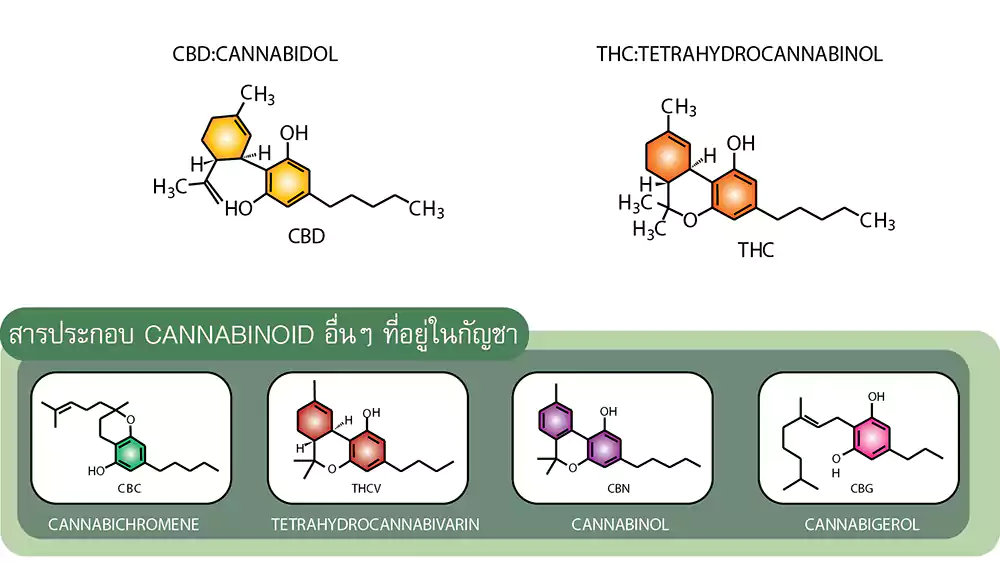
Within the seeds of cannabis , it was also found that food accumulated, such as starch and condensed fat. It contains 29-34% oil, high unsaturated fatty acids, comprising 50-60% linoleic acid (C18:2), 15-20% linolenic acid (C18:3) and oleic acid (C18). :1) 11-13 percent
Pharmacological studies
The effect of Cannabis extract in cancer treatment A study in Israel of Cannabis extract found that it contains a group of compounds. Cannabinoids, Terpenes and Flavonoids, which can be measured using GC-FID and GC-MS techniques, demonstrated the effect of Cannabis extract on different types of cancer cells, including Breast cancer, Colon cancer, Prostate cancer and Normal cell. that the extraction method And different strains of Cannabis extracts provide different active ingredients. which results in killing different types of cancer cells, found that cannabis extractinhibit the proliferation of cancer cells and promote the death of cancer cells In addition, Cannabis extract was found to help kill cancer cells. It also stimulates stem cells and slows the aging of brain cells. A study on the use of Cannabis extract in cancer patients found that patients had to receive high doses of THC. Cannabis extract (contains THC 70-80%) 1 g per day. In addition, a one-year study on the use of cannabis extract in 21 brain cancer patients was divided into two groups: the THC group. :CBD + Temozolamide and Placebo + Temozolamide A similar ratio of CBD to THC in Cannabis extract reduces neuroprotective effects. The THC:CBD + Temozolamide group had a survival rate of 83%, and the placebo + Temozolamide group had a 53% survival rate.
Effects of Cannabis Δ9-Tetrahydrocannabinol and Cannabidiol on Neuroprotective Effects and Anxiety Symptoms Δ9-tetrahydrocannabinol (Δ9-THC) and cannabidiol (CBD) are the active ingredients in cannabis.(Cannabis sativa) affects the nervous system. It has been reported that the substance can treat anxiety symptoms. but still do not know the mechanism Clinical Test double-blind, randomized, placebo-controlled In 15 healthy volunteers who had used cannabis ≤15 times, divided into 3 groups, group 1 received 10 mg of Δ9-THC, group 2 received 600 mg of CBD, and group no. 3 Taking placebo, Δ9-THC was found to increase anxiety, motion sickness, psychotic symptoms, and drowsiness. However, the symptoms were reduced in the CBD group. CBD had a stimulating effect on the limbic and paralimbic regions, which reduced anxiety, while Δ9-THC had a stimulating effect on the frontal and parietal brain regions, which Increased effect on anxiety This made it possible to conclude that substances from cannabis affect the nervous system as Δ9-THC increases anxiety symptoms and CBD reduces anxiety symptoms.
In laboratory experiments, cannabidiol has been shown to heal inflammatory intestinal lesions of Crohn's disease. Due to its ability to absorb free radicals that are harmful to cells, cannabidiol slows down the activity of immune cells. microglia that may be over-activated by free radicals and cause more inflammation This test takes place in the brain and eye. From intraocular testing, it may also lead to use in diabetic patients who are about to lose their eyes.[14]
Scientists from Madrid, Spain, have found that THC can kill cancer cells in the brain, skin and pancreas. THC destroys the cancer process. The malignant tumors build up their own veins and prevent cancer cells from moving elsewhere. THC then binds to receptor proteins on the surface of the cancer cells. Stimulates cells to produce a fatty substance called “ceramide” and then causes the cells to self-destruct. without affecting healthy cells And previous reports have also shown that THC can fight breast cancer and leukemia. Cannabis has also been tested against diabetes, inflammatory joint disease, cerebrovascular disease, dementia, and epilepsy. For people, THC substances in capsule form will make them sleep better. and stop nightmares
Toxicological studies
When marijuana is consumed in large quantities, the physical effects on various body systems, the cardiovascular system, in people who have never used marijuana before have a 20%-100% faster pulse in the first few hours. It also has the effect of relaxing the peripheral blood vessels. Postural hypotension is possible. The myocardium contracts to withstand the condition for a few days in some people who have never taken drugs or who have pre-existing vascular disease. May cause chest pain from myocardial ischemia.
effect on the nervous system There will be an increase in blood supply to the brain, thereby impairing the control of body movements. Decreased hand strength and stability May cause drowsiness, lack of concentration, slurred speech, slower response to things.
The effect on the respiratory system causes acute transient bronchodilation. If the first use makes the symptoms of asthma better in the cannabis rubber phase, causing a chronic cough, a lot of sputum, and a more sensitive bronchial response. In addition, cannabis - stuffed cigarettes contain three times as much nicotine (tar) as regular cigarettes. And it binds to more than a third of the airways. Marijuana also increases the risk of respiratory cancer. If it is smuggled cannabis, it may be found to be contaminated with the aspergillus species, which causes serious respiratory infections. especially those with impaired immune systems
Behavioral and Emotional Effects It gives a feeling of being drunk with marijuana, also known as high, meaning that the mind can leave the body. relax happy Distorted perception of time and distance, more sensory perception of different stimuli, more laughter. more chatty relieve anxiety decreased alertness may be depressed Effects will vary depending on the size of cannabis received, the user's expectations, the method of use. THC also activates the dopaminergic neuron, the brain region involved in the reinforce (rewarding) effects, which induce addiction to mood swings. Negatives may be found, but not often.
Effect on intelligence Cause short-term memory impairment, or short-term memory, in both short- and long-term users, causing a decline in intelligence or a loss of cognitive function. short
Cannabis and cause reproductive disorders such as reducing the amount of sperm Decreased ovulation, irregular menstruation Cannabis use during pregnancy was found to cause impairments in the brain's memory, speech, cognitive processes and information processing. It also increases the prevalence of tremor or staring in babies born during the first week of age.
Psychotropic effects: Short-term exposure to high doses of cannabis can cause anxiety, hallucinations, delusions, memory loss, and anxiety. The so-called apathic syndrome consists of indifference, feeling unsuccessful. Lack of energy to do things can lead to depression. There are also studies that support the association of schizophrenia. (schizophrenia) in patients who use cannabis as well.
Acute toxicity for marijuana overdose (acute toxicity), poor motor control The stability and strength of the hand is reduced. Postural hypotension, drowsiness, lack of concentration, slowed reflexes, slurred speech, and even mild red eyes in adults. In children who consumed as little as 250-1000 mg of hashish marijuana, it was made worse in the early stages. At 30 minutes, the patient has symptoms of apnea, bradycardia, cyanosis, and limp limbs.
Marijuana Addiction and Drug Withdrawal 7%-10% of regular marijuana users develop both physical and behavioral addictions. The sooner you start using marijuana and use it more often physically and behaviorally. The sooner you start using marijuana and use it regularly, the more you become addicted. The symptoms of drug withdrawal (withdrawal syndrome) include restlessness. eating and sleeping disorders They also found symptoms of sweating, nausea, vomiting, excessive saliva, tremors, weight loss, and fever. All symptoms can occur even after a week of stopping the addiction.
Tips and Cautions
Cannabis can cause hallucinations, seizures, dizziness, or become addictive.
Cannabis has been stated that If men eat too much will cause semen to move.
Cannabis has been stated that Women who eat too much will cause vaginal discharge.
Cannabis use , even for a short time Some addicts can lose their memory. Because marijuana will cause the brain and memory loss. Confusion, anxiety, and if the user is a person with psychotic symptoms will be more at risk than normal people
Cannabis also has a destructive effect on sex drive. This causes the testosterone levels in men to decrease. make the sperm volume less People who use them often have problems with sexual dysfunction.
Smoking just 4 cannabis stuffed cigarettes is equivalent to smoking 20 cigarettes, or 1 pack, so it can damage your respiratory function. This makes them 5 times more likely to develop cancer than regular smokers.
Long-term use of marijuana It will lead to high blood triglycerides and cause heart disorders. cause heart failure have a brain disorder that causes psychotic symptoms
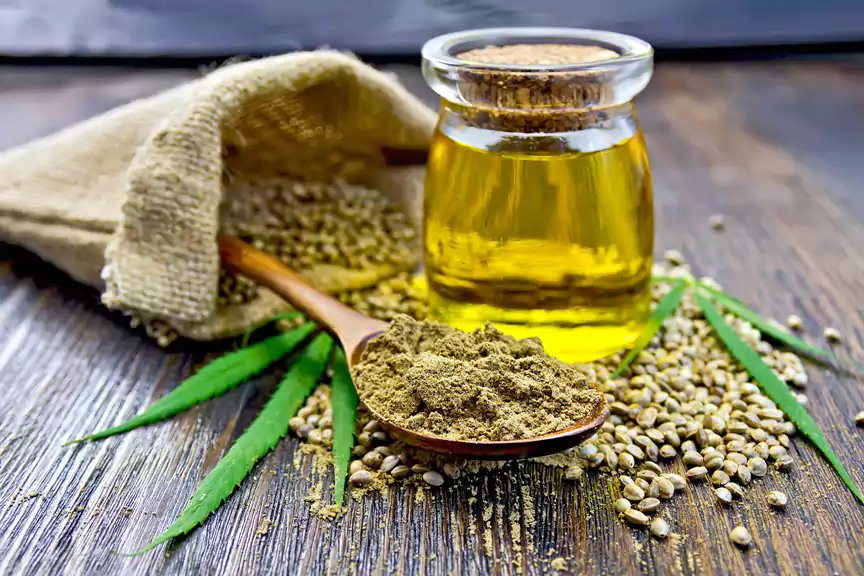
References
Wittaya Boonworapat. “ Cannabis ” Thai-Chinese herbal encyclopedia book commonly used in Thailand. . Page 62.
Dr.Prapatsorn Thipparat. Cannabis Plants: General Knowledge and Essence Examination. Medical Science Center 1, Chiang Mai
academic conference papers on research and development of medicinal cannabis and cannabis extracts for the country's development At Grand Hall 2, Rama Gardens Hotel, 8-9 Feb. '18
Weerachai Na Nakhon. Botanical characteristics and benefits of hemp plants . Academic seminar on research and economic development of hemp plants. October 15, 2005 Lotus Hotel Pang Suan Kaew, Chiang Mai Province.
Assoc. Prof. Dr. Kasian Phangkanon. Marijuana. What's there to say about drugs. Nana Sara column. Village doctor magazine. Volume 193 . May 1995
Dr. Wit Thiangburanatham. “ Cannabis ”. Thai Herbal Dictionary Book , 5th Edition, pages 56-57.
Dr. Yajai Aphibunyophas, Assoc. Prof. Winai Wananukul. The condition of marijuana poisoning. Cannabionoids Poisoning. Microtoxicology. Vol. 17. No. 2. April-June 2009. Pages 3-5.
Department of Botany Pharmacy Faculty of Pharmacy Mahidol University. Lanna herbal book. “ Indian hemp, Marihuana marijuana ”. Page 59.
The difference between cannabis and cannabis plants . Question-answer board. Herbal information office Faculty of Pharmacy Mahidol University (online) can be accessed from http://www.medplnt.mahidol.ac.th/user/reply.asp?id=5415
Ehrensing DT (1998). “Feasibility of Industrial Hemp Production in the United States Pacific Northwest” in Station Bulletin 681. Agricultural Experiment Station, Oregon State University, pp. 1-41.
Effects of cannabis delta9-Tetrahydrocannabidol and Cannabidol on neuroprotective effects and anxiety symptoms.Herbal Movement News.Herbal Information Office Cardamom Faculty of Pharmacy Mahidol University.
Canabis [Toxicology information on CD-ROM] AltMedDexPoint system. MICROMEDEX (R). Healthcare Series vol 141,2009.
McGuigan M. Cannabinoids. In: Goldfrank LR, Flomenbaum NE, Hoffman RS, Howland MA, Lewin NA, Nelson LS, editors. Goldfrank's toxicologic emergencies. 8th ed. New York: McGraw-Hill;2007: p1212-20.

